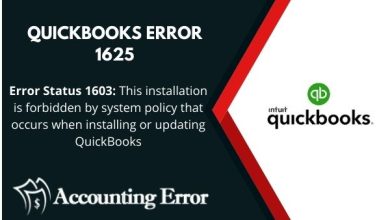Difference between an Article and Blog

Some would argue that there’s no difference at all. Indeed, the lines between article blog posts are becoming increasingly blurry. In this post, I’ll explore the difference between an article and blog post.
Where Does the Confusion Come From?
Blog posts are a relatively new form of writing that has become popular with the rise of the Internet in the last fifteen years. Articles date back to the very earliest magazines and newspapers several hundred years ago.
In fact, my sources indicate that the first newspapers in the U.S. were first published in the 1800s.
So, writers have been creating articles for hundreds of years. They have only been creating blog posts for about fifteen years. No wonder there’s confusion!
Three Characteristics of Blog Posts
The characteristics of a blog post are related to the purpose of a blog that I find most helpful–a blog is a part of a conversation.
Keeping in mind a blog as a conversation here are some characteristics of blogs:
- Conversational language. Conversational language is quickly becoming the business language, and it’s just a matter of time. It’s a lot more approachable than the more formal “legalese” that’s being phased out. The language employed in a blog, on the other hand, is the most informal of all. Blog postings frequently address “you,” the reader, and solicit reader interaction… which leads me to the following topic.
- Comments. The majority of blogs allow and even encourage reader comments. The most effective blog entries I’ve seen contain nearly as much information in the comments as the post itself.
- Opinionated. Finally, blog posts often contain the author’s opinion.
Of course, these characteristics are generalizations. While you may be able to point to one or more specific blogs that defy these conventions, they do fit most blogs.
Three Characteristics of Articles
Articles stand in contrast to blog posts because their main function is to convey information. Although an article may sometimes seek to sway the reader’s opinion or move them to action–most often the purpose of an article is simply to report news or facts.
Here are some common characteristics of articles:
- Factual. While a blog post may contain facts, an article seeks to present information in a more objective fashion. An article may also refer to source information or even directly quote sources. The article writer’s opinion of the topic at hand is often not immediately evident.
- Less familiar language. Articles are not necessarily addressed directly to the reader. Rather, articles are more likely to be written in the third person.
- No comments. Although some online articles do allow for comments to build community, most true articles do not include comments from the readers. That’s because there’s really no reason for anyone to comment on what is essentially a factual piece. Comments are usually reserved for blog posts, which often follow articles as a form of commentary. (Or in a newspaper, for the editorial page.)
This is a very important lesson to keep in mind if you are writing for an internet audience. Blog writing is the order of the day when it comes to online writing, with even successful entrepreneurs reaching out through the medium. But it can be easily confused with article writing, which is a different ballgame altogether. Writers may end up confusing the two, and as a result, your work might just fail to appeal to your core audience the way you want it to.
SEO keywords
Search Engine Optimisation helps content reach a wider audience and is a key factor behind blogs and write-ups going viral. Blogs are built around SEO keywords and the writing is often changed to incorporate the same. For example, in a blog about Manchester United Football Club, the author will have to include key terms such as ‘Red Devils’, ‘Mourinho’ or ‘Man Utd’ for the piece to have better traction on the internet. On the other hand, putting in SEO keywords isn’t necessary in an article. Even if the article is published on the internet, there isn’t too much of an emphasis on putting in SEO keywords.
Personal opinion
The vast majority of articles, besides op-ed pieces, look to steer clear of personal opinion. They are based more on reportage, information, and statistics. However, blogs often describe things from a personal perspective, with a lesser reliance on reportage and data.For example, an article on the new Union Budget of India will contain comparisons to previous budgets, statistical data and reactions from a wide variety of people. However, a blog on the budget can consist solely of the views of the author and his opinions on the new budget.
Editing
Articles are usually written for large publications and go through a thorough editing cycle to make sure that there aren’t any errors. On the other hand, blogs are usually self-published or go through minimal editing.This may not be the case for much longer, with editing being a crucial step in the process of publication and blogs constantly evolving. However, the internet presents a free-for-all platform, and as things stand, the lack of scrutiny and editing is a key feature of blog writing.
Length and style
The most noticeable difference between a blog and an article is the difference in writing style and the length of the piece. Blogs can range anywhere from 300 to 1000 words, but articles are often much lengthier. Depending on the publication, the standard length of an article can vary from 1500 to 5000 words.
The writing style for blogs has a very casual tone to it. It’s often short and doesn’t include too many words that are hard to grasp. Articles aim to emulate literature in a journalistic style while blogs aim to get the point across in commonly used language and terminology.
The different nuances to writing a blog and an article will help writers to target their audience better. There is a need for both and the sets of people that they cater to can even overlap, however the fact remains that understanding which kind of content to offer goes a long way in ensuring that your writing makes the desired impact. The key here is to make sure that the reader’s expectations are met.





